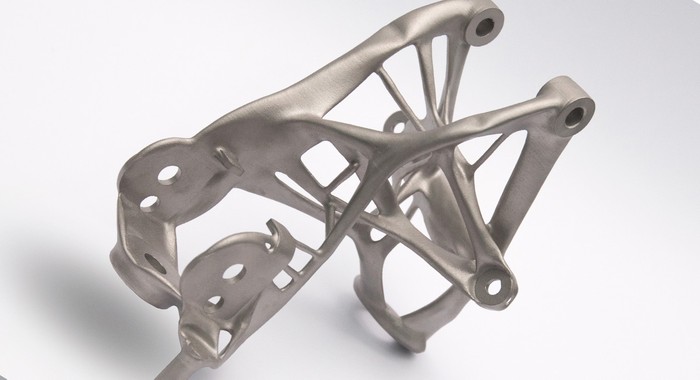
GM explores 3D printing, generative design for next-gen parts
A proof-of-concept seat bracket is 40 percent lighter and 20 percent stronger, replacing eight different components into a single 3D-printed part.
General Motors has begun exploring advanced manufacturing and design methods to build next-generation lightweight parts.
Using Autodesk's generative design software, the automaker created a proof-of-concept seat bracket that is 40 percent lighter and 20 percent stronger than the original component. It also merges eight different pieces into a single 3D-printed part.
Generative design uses artificial intelligence algorithms to run hundreds of design options based on specific strength requirements, material choices and other elements. Many of the computer-created designs have an organic appearance that is best manufactured via 3D printing or casting.
"Generative technologies fundamentally change how engineering work is done because the manufacturing process is built into design options from the start," says Autodesk senior VP Scott Reese.
"GM engineers will be able to explore hundreds of ready-to-be-manufactured, high-performance design options faster than they were able to validate a single design the old way."
GM as not committed to manufacturing the unique seat bracket. As generative design software is still in its infancy and 3D printing remains a relatively slow and expensive alternative to traditional machining, such projects are likely to get a production debut in high-end cars, such as the Bugatti Chiron, before trickling down to mainstream vehicles.